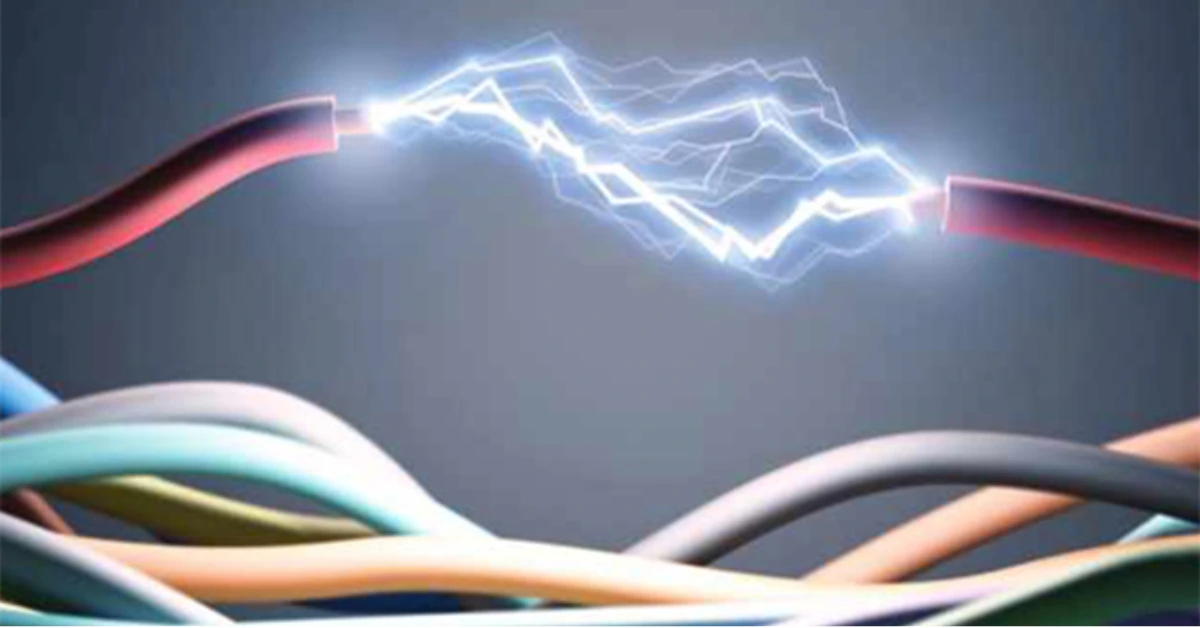Have you ever noticed your lights flicker for a moment or dim unexpectedly? This common occurrence is a sign of power fluctuations, a persistent issue in many households. These variations in the electrical supply, while often brief, can pose a significant threat to the health and longevity of your valuable home appliances. Understanding the different types of these fluctuations, from sudden surges to prolonged sage, is the first step toward safeguarding your electronics and ensuring a stable and safe electrical environment in your home.
Types of Power Fluctuations – Quick Info
To protect your home, it is helpful to know the different kinds of fluctuations in electricity. Each type has a unique characteristic and can affect your appliances differently.
| Type | Description | Impact |
|---|---|---|
| Voltage Sag | A short-term drop in voltage, often causing lights to dim. It typically lasts for a few seconds. | Can strain and damage the motors in appliances like refrigerators and air conditioners. |
| Voltage Surge | A brief but significant increase in voltage that lasts for a few nanoseconds to seconds. | Can degrade, damage, or destroy the sensitive electronic circuits in TVs and computers. |
| Voltage Spike | An extremely fast and intense burst of voltage, usually lasting only a few microseconds. | Can instantly burn out circuits and is a major cause of catastrophic appliance failure. |
| Brownout | A prolonged period of low voltage, intentionally set by utility companies during high demand. | Causes appliances to run inefficiently, overheat, and suffer long-term damage. |
| Blackout | A complete loss of power supply, which can be followed by a surge when power is restored. | Causes operational downtime and potential damage from the surge upon power restoration. |
What Causes Power Fluctuations?
A fluctuating power supply can be triggered by a variety of events, both inside and outside your home. Understanding these root causes can help you identify why you might be experiencing an unstable electrical current.
Unbeatable Price 5-Star Rated Partner! 2200+ Shades! Top Quality Paint Free Cancellation!

Get a rental agreement with doorstep delivery

Find the BEST deals and get unbelievable DISCOUNTS directly from builders!

5-Star rated painters, premium paints and services at the BEST PRICES!
- Overloaded Electrical Grid: During peak hours, especially in summer, the electricity demand can exceed the supply capacity, leading to voltage drops or brownouts across a whole area.
- Faulty Wiring in the Home: Old, corroded, or improperly installed wiring within your house can cause internal electrical fluctuations.
- Lightning Strikes: A lightning strike on or close to power lines can induce a massive voltage spike, causing power fluctuations.
- Heavy Appliance Usage: Turning on high-powered appliances like air conditioners, water heaters, or pumps can cause a momentary voltage sag.
- Proximity to Industrial Areas: Homes located close to factories or workshops that use heavy machinery often experience frequent electric fluctuations due to the large, intermittent power draws.
- Grid Switching by Utility Company: Power companies often reroute electricity to manage load or perform maintenance, which can cause brief surges or sags in the connected homes.
- Poor Electrical Connections: Loose or corroded connections at the meter, circuit breaker, or wall outlets can create resistance and lead to unstable voltage.
- Inclement Weather Conditions: Strong winds, heavy rain, or falling tree branches can damage power lines and transformers..
- Faulty Transformers: A failing neighbourhood transformer or one that is not adequately rated for the load it serves can be a constant source of voltage instability for all connected homes.
- Electromagnetic Interference (EMI): Signals from nearby broadcast towers or other powerful electrical sources can sometimes interfere with power lines, causing minor but persistent fluctuations.
- Grounding Issues: An improper or non-existent electrical grounding system in your home can exacerbate the effects of surges and spikes, leaving your appliances more vulnerable to damage.
Best Devices to Handle Power Fluctuations
Investing in the right protective devices is the most effective way to manage a voltage fluctuation problem. Each device serves a specific purpose, offering a layer of defence for your valuable electronics.
| Device | Purpose | Ideal For |
|---|---|---|
| Voltage Stabilizer | Actively monitors and adjusts the incoming voltage, boosting it during sags and reducing it during surges to provide a constant output. | Refrigerators, air conditioners, televisions, and washing machines. |
| Surge Protector | Diverts excess voltage from a sudden surge or spike safely to the ground, preventing it from reaching your connected devices. | Computers, gaming consoles, routers, and home theatre systems. |
| Inverter or UPS | Provides an alternative power source from a battery during a blackout and conditions the power to protect from minor fluctuations. | Laptops, desktops, Wi-Fi routers, and essential lights. |
| Automatic Voltage Regulator (AVR) | A more advanced stabiliser that offers tighter voltage regulation and can manage the power for an entire house if installed on the mainline. | Sensitive medical equipment, high-end servers, or the entire home. |
Cost of Common Fluctuation Protection Devices (Indicative)
The cost of these protective devices varies by capacity, brand, and features. Here is an indicative price range to help you budget for safeguarding your home from power fluctuations at home.
| Device | Price Range (₹) |
|---|---|
| Basic Stabiliser (for TV/Fridge) | ₹999 – ₹4,000 |
| Advanced AVR (for AC/Mainline) | ₹4,000 – ₹15,000+ |
| Surge Protector Strip (Multi-Socket) | ₹200 – ₹2,500 |
| UPS (650 VA – 2 KVA for PC/Router) | ₹3,000 – ₹18,000 |
How Power Fluctuations Affect Home Appliances?
- Damage to Compressors: Appliances like refrigerators and ACs are highly susceptible to low voltage, which can cause their compressor motors to overheat, struggle, and eventually fail permanently.
- Burnout of Microprocessors: Modern electronics rely on delicate microprocessors. A high voltage surge or spike can easily fry these circuits, rendering a smart TV or microwave completely useless.
- Data Loss and Hard Drive Failure: For computers and laptops, a sudden power surge or dip can corrupt files, cause the operating system to crash, and lead to irreversible hard drive failure.
- Reduced Lifespan of Appliances: Even minor, constant fluctuations force electronic components to work harder and run hotter, which significantly shortens their overall operational lifespan and leads to premature failure.
- Flickering of Lights: Persistent flickering in LED and CFL bulbs is not just an annoyance; it is a sign of unstable voltage that will cause the bulbs to burn out much faster than expected.
- Inverter Malfunctions: The battery and charging circuit of an inverter can fluctuate due to an unstable input can get damaged, reducing its backup efficiency and leading to costly repairs.
- Overheating of Components: High voltage causes electrical components to draw more power than they are designed for, leading to overheating, which can melt plastic parts and create a fire hazard.
- Inconsistent Performance: A washing machine might stop mid-cycle, or a microwave may not heat food properly. These performance issues are often early warning signs of an underlying voltage fluctuation at home.
How to Prevent Power Fluctuation Damage?
While you cannot control the grid, you can take several proactive steps. Implementing these measures can drastically reduce the risk of damage.
- Unplug Devices During Storms: This is the simplest and most effective way to protect electronics from powerful surges caused by lightning. Disconnect sensitive items like TVs and computers completely.
- Use Voltage Stabilisers: Install dedicated voltage stabilisers for expensive appliances like your refrigerator, air conditioner, and television.
- Deploy Surge Protectors: Use good-quality surge protector power strips for your computers, entertainment systems, and routers..
- Install a Mainline AVR: For comprehensive protection, consider installing an Automatic Voltage Regulator (AVR) at your home’s main electrical inlet to stabilise power for the entire house.
- Avoid Overloading Circuits: Do not plug too many high-power devices into a single outlet or circuit.
- Inspect Your Home’s Wiring: Periodically have a qualified electrician inspect your home’s wiring for any faults, corrosion, or loose connections.
- Use a UPS for Critical Devices: Connect your desktop computer, Wi-Fi router, and other essential electronics to a UPS to protect against data loss and damage during blackouts and brownouts.
- Check for Proper Grounding: Ensure your home has a proper earth connection. Good grounding is essential for surge protectors to work effectively and divert excess voltage safely away.
- Don’t Use Damaged Cords: Immediately replace or repair any frayed or damaged power cords on your appliances, as they can cause short circuits and contribute to electrical instability.
When to Call a Professional Technician?
If you experience frequent flickering lights, buzzing sounds from outlets, or appliances that repeatedly malfunction despite using basic protectors, it is time to seek professional help. These are signs of a deeper issue within your home’s electrical system. For a thorough inspection and reliable solutions, you can book a qualified electrician through NoBroker. A professional can diagnose the root cause of the power fluctuations, check your wiring, and install mainline protection devices correctly, ensuring your home and appliances are safe.
Frequently Asked Questions
Ans: Factors like power grids during peak demand, faulty or old wiring within the house, and external factors like severe weather or issues with neighbourhood transformers.
Ans: Yes, absolutely. High voltage surges can burn out electronic circuits instantly, while low voltage sags can damage motors in appliances like refrigerators and ACs over time, leading to costly failures.
Ans: You can use a simple multimeter plugged into a wall socket to check the voltage reading. A more user-friendly way is to use a plug-in voltage monitor, which displays the current voltage level.
Ans: It is safe and recommended for motor-based and expensive appliances like fridges, ACs, and TVs. For small electronics like chargers, a surge protector is often sufficient and more cost-effective.
Ans: They serve different purposes. A stabiliser corrects both high and low voltage to provide a constant supply, while a surge protector only protects against sudden high-voltage spikes. For comprehensive protection, using both is ideal.
Recommended Reading

Loved what you read? Share it with others!
 Suju,Author
Suju,Author
I’m Suju, an alchemist turned content writer from the enchanting land of Coorg. I love infusing my words with a touch of magic, creating engaging blogs, and informative articles And I have a deep passion for crafting beautiful poems.
Source link




